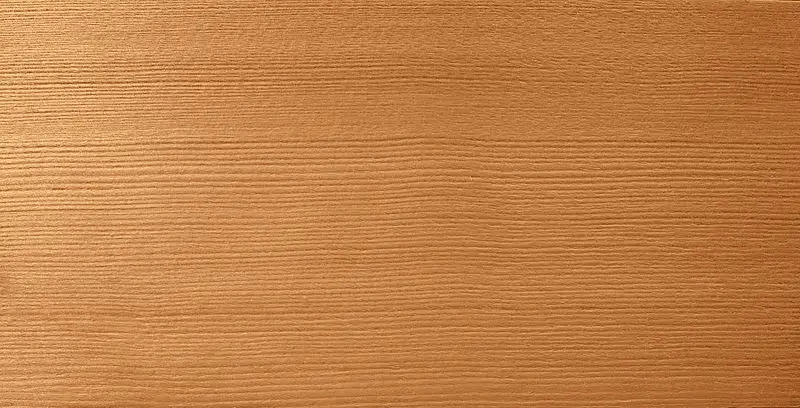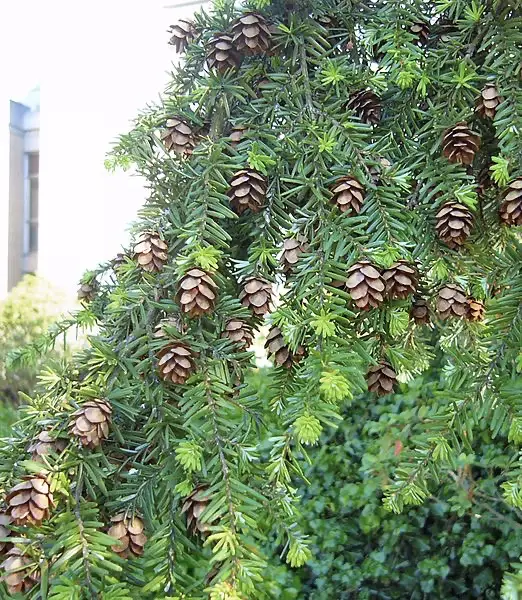Wood is an ideal material for furniture and decorative projects due to its natural resistance to pests, as well as its excellent properties for paint and glue adhesion.
Hemlock wood is a type of wood gotten from a coniferous tree that is found mainly in North America and is known for its lightweight, straight grain, and slightly coarse texture. Its light color makes it a popular choice for cabinets and paneling as it provides a clean and bright look.
The purpose of this article is to provide a comprehensive overview of hemlock wood and its various uses.
If you’re keen to learn more about the material, this article will give you all the information you need to make an educated decision about incorporating this adaptable wood into your next project.
What is Hemlock Wood?

Hemlock wood is a softwood that is prized for its natural beauty and versatility. Often compared to white pine, hemlock has a coarser texture that gives it a natural charm.
It has a hardness rating of 540 lbf which places it towards the lower end of the scale compared to other popular wood types such as oak or maple.
The lower hardness rating means that the wood may be more susceptible to denting and wear than other harder woods. Nonetheless, it is still a sturdy option for many projects.
The Hemlock Tree

The wood is sourced from hemlock trees. The hemlock tree has a unique, cone-like shape and grows to incredible heights. Its reddish bark makes it easily identifiable and the thin branches spread out or hang downwards while creating a graceful look.
One of the most notable features of the true hemlock tree is its short and blunt leaves, growing from unique, cushion-like structures on the twigs. Its structure protects the tree from harsh weather conditions and also serves to store water and nutrients allowing the tree to thrive even in tough environments.
The true hemlock tree is native to the temperate regions of the Northern hemisphere where it can be found in a variety of habitats; from moist lowlands to rocky mountainsides. It is an essential tree for many wildlife – providing habitat for birds, insects, and other small mammals.
Despite its delicate appearance, hemlock is a hardy and resilient tree that can live for many decades. It is a vital source of wood for many different uses and is widely cultivated for its ornamental value.
Whether used for lumber, as a landscape tree, or simply as a source of beauty, the true hemlock tree is a magnificent species that continues to captivate and inspire people.
Types of Hemlock
There are about 14 species of Hemlock. The three main types include Eastern hemlock (tsuga canadensis), Western hemlock (tsuga heterophylla), and mountain hemlock (tsuga mertensiana).
1. The Eastern Hemlock
The Eastern hemlock also known as Canadian hemlock is native to the Eastern part of North America and is widely distributed throughout the region. It has a coarse grain, uneven texture, and light reddish brown tinge.
In Europe, the Eastern hemlock is commonly used as an ornamental tree; adding beauty and grace to parks, gardens, and landscaped areas.
Its needles and hanging branches make it an attractive choice when looking to decorate. Its delicate nature creates a calming atmosphere.
2. The Western Hemlock
The Western hemlock is native to the Pacific Northwest region of North America. Western hemlock is considered to be a superior wood species for building purposes; offering excellent working properties and stability. The heartwood of mature trees displays growth rings.
Renowned for its exquisite aesthetics, Western hemlock wood is perfect for doors, framing, and floors. Its natural charm will elevate any interior to the next level.
3. The Mountain Hemlock
The mountain hemlock is native to high elevations in the Pacific Northwest region. In these areas, it can reach impressive heights with some growing up to 60 feet or more.
However, when planted in lowland gardens, the growth of mountain hemlock is much slower and it is often much smaller in size, typically reaching only 20 to 30 feet in height.
This slow growth is due to several factors, including soil quality, exposure to sun and wind, and overall growing conditions. Lowland gardens often lack the ideal growing conditions that mountain hemlock thrives in, such as well-draining soils and high levels of humidity. In these conditions, mountain hemlock may struggle to reach its full potential so its growth is often limited.
Tsuga mertensiana is still a desirable choice and can be found in specialty applications such as cabinetry, joinery, and flooring.
Each species of hemlock wood has adapted to its specific environment and has developed unique properties to suit its needs.
Key Characteristics of Hemlock Wood
Hemlock wood is a multipurpose and appealing preference for different sorts of projects. Here are some of the traits that make the wood material such a great selection for a variety of applications:
1. Durability
Despite its lower hardness rating compared to hardwoods, hemlock is an incredibly reliable material for many projects.
Although products made from it can withstand wear and tear, it is not as resilient as other kinds of lumber such as oak or maple, and therefore might not be suitable for highly strenuous uses.
2. Strength
The wood features a sturdy build which empowers it to bear wear and tear to a considerable extent. Hemlock wood is a great balance of both lightweight and strength. It is not as heavy as some hardwoods but still provides enough stability or strength for projects.
The strength of hemlock wood is measured by its Modulus of Rupture (MOR) and is rated at 11,300 psi. This value indicates that the wood has a relatively strong resistance to breaking when under stress.
Its moderate strength allows it to withstand everyday wear and tear without breaking or becoming damaged easily.
Additionally, it is easier to handle and maneuver as a result of the lightweight of the material.
3. Resistance To Pests Due To Natural Scent
The western hemlock (tsuga heterophylla) and the mountain hemlock (tsuga mertensiana) are both known for their natural resistance to pests. This is due to their unique composition and their natural odor which deters common pests from inhabiting the wood.
This makes hemlock wood a great choice for outdoor projects where it may be exposed to insects, as well as for indoor projects, where it can deter pests from taking up residence.
4. Hemlock Wood Resists Warping & Twisting
Amongst other things, hemlock wood is appreciated for its stability which means it won’t warp or twist easily.
The wood stays true to its original shape even when exposed to changes in moisture and temperature. This stability makes the material an excellent choice for moldings, trim, and other applications where dimensional stability is critical.
5. Appearance
Hemlock timber has a rosy-brown shade for its core and its pale-colored sapwood is barely distinguishable from the heartwood. It may also contain dark streaks caused by bark maggots, which can add character and interest to the overall appearance.
The wood is admired for its visually appealing qualities so it is optimal for wood items that prioritize a consistent and spotless aesthetic.
The natural beauty of the wood can be highlighted by staining or clear finishing. Hemlock wood gives a bright, clean look to any space. This light color is particularly well-suited to modern or minimalist styles.
6. Straight Grain
Hemlock trees produce wood that is known for its distinctive straight-grained material with a slightly rough feel.
Its typical growth process leads to the grain pattern being a distinguishable feature of hemlock wood. The straight grain also makes hemlock wood easy to work with as it can be sawed, drilled, and carved with ease.
7. Dimensionally Stable Knots
Hemlock has small, sound black knots that are tightly bound to the surrounding wood and tend to remain stable over time. This unique property of the wood provides character and visual interest to the wood.
Unlike loose or unsound knots which can be unsightly and weaken the wood, tight knots like those found in hemlock is a desirable feature that enhances the natural beauty and character of the wood.
The stable nature of the knots also means that they are less likely to fall out or cause the wood to split; ensuring a high-quality end product.
8. Uneven Texture
The uneven texture of hemlock wood is one of its defining peculiarities. The coarse and irregular surface gives the material a unique and natural look that is both rustic and charming. This texture makes it stand out compared to other wood types that have smooth surfaces.
Whether used as a standalone material or as a complement to other materials, hemlock wood’s uneven texture is sure to make a statement in any project.
9. Natural Moisture Resistance
Hemlock is well-recognized for its innate ability to resist moisture; thanks to the fact that the tree grows in moist places. A basic layer of moisture protection is provided with this, yet woodworkers usually seal the items with a coat of polyurethane to increase the level of protection.
This wood material is excellent for deck construction or for installing flooring due to its resistance to damp or humid conditions. You can be confident that the wood product will remain structurally sound in any given environment.
10. Good Adhesion For Both Paint & Glue
Hemlock wood is an excellent choice for home improvement projects for instance painting cabinets, crafting furniture, or constructing a deck.
It has superior adhesive and paint-retaining abilities which will allow it to retain its finish over many years of use.
Hemlock Wood Advantages
It is a highly suitable option for fulfilling your woodworking requirements. The wood provides the following benefits:
1. More Sturdy Than Other Softwoods
To begin with, hemlock is relatively strong compared to other softwoods. Despite being a softwood, hemlock has a hardness rating of 540 so it is strong enough for construction and furniture applications that require a certain level of strength and durability.
2. Immune To Warping
Hemlock wood is impressively resistant to warping which is a common issue with some other types of softwoods.
Warping occurs in many types of wood including hardwoods and it is caused by moisture fluctuations in the wood fibers. When wood is exposed to changes in moisture levels, it can cause the fibers to expand and contract. This results in warping and twisting.
However, hemlock is one of the few types of softwoods that is known for its impressive resistance to warping. This is due in part to its straight grain, which helps to prevent twisting and bending of the wood. Its stability is also due to the tree’s natural moisture resistance.
3. Attractive Appearance
The distinct look of hemlock wood makes it an attractive pick for the creation of projects with a natural aesthetic.
Its light reddish-brown hue combined with the straight grain and uneven texture give it an exceptional attractiveness that is difficult to replicate.
Additionally, the interesting and unique coloring of the wood due to wood maggots adds character to it.
4. Easy To Stain or Finish
Hemlock is also easy to stain and finish, allowing for a range of creative options in terms of color and finish. Whether you are looking to achieve a light, natural look or a rich, dark color, hemlock can be easily stained to meet your desired appearance.
5. Simple To Handle
It has gained notable popularity for various woodworking projects due to its ease of handling and workability. Being lightweight with high machinability, it can be cut and shaped seamlessly with accuracy.
All species of hemlock wood are easy to work with both by hand and with power tools. It is an ideal wood to go for when undertaking tasks that need intricate detailing or curves thanks to its softness, which makes it simpler and quicker to sand, cut, or shape.
6. Cost-Effective
In addition to its practical advantages, hemlock wood is also an affordable option. It is relatively more budget-friendly than other types of wood.
Hemlock Wood Disadvantages
Hemlock is a popular material for furniture and other applications but there are some potential drawbacks worth noting. This may include:
1. Challenging To Work With When Dry
The material poses a challenge when working with it in its dry state as it becomes brittle and hard to shape.
For those who don’t have much experience with woodworking, this type of wood is not ideal as it can be difficult to work with.
2. Vulnerable To Dents
Hemlock wood is soft so it is unsuitable for areas with high traffic or for making objects that will be used frequently. This often leads to unsightly marks and scratches on the surface which over time may cause a significant reduction in its overall aesthetic appeal.
3. Inferior Longevity
The material is rather fragile and is likely to crack or split when used outdoors or in conditions with too much moisture.
These qualities make it unsuitable for long-term use; it will not withstand the tests of time.
4. Requiring Frequent Maintenance
Hemlock wood is porous and highly absorbent. Regular maintenance may be required. This includes sanding, staining, and finishing to keep the wood looking its best.
Regular maintenance can be time-consuming and expensive so the wood is less than ideal for those who need low-maintenance furniture.
5. Tendency To Darken Over Time
Aging can transform the look of hemlock wood furniture as it is known for darkening with time. This property alters its appearance over time and may not be the ideal material if you desire a lasting, consistent aesthetic.
Uses Of Hemlock Wood

Wood is a highly sought-after material that has a wide range of uses, from construction to woodworking to paper production.
Its a reputation for being easy to work with both by hand and with power tools, so it is an ideal choice for many applications. Its lightweight yet sturdy nature makes it the perfect choice for the production of pallets, boxes, and crates.
Also a great option for flooring. Its neutral color and straight-grain pattern can complement a wide range of interior design styles. When properly finished with a clear coat of polyurethane, flooring made from this wood can last for many years and retain its beautiful appearance.
Furthermore, the superior working properties of hemlock wood make it a go-to for woodworkers, especially when it comes to interior woodworking projects and moldings.
With its coarse, uneven texture and linear grains, hemlock is perfect for intricate and detailed work – lending itself to creating elegant and beautiful joints, doors, furniture, and veneered interior paneling.
Other significant uses of this softwood include:
- Cabinetry
- Paneling
- Suspended ceilings
- Windows
- Furniture
- Roof decking
- Framing
- Plywood
- Ladders
- Decorative wood panels
Health & Safety Concerns With Hemlock Wood
When working with wood materials, always consider the potential health and safety concerns associated with this wood.
This includes potential allergies and safety measures that must be taken to ensure a safe and healthy working environment.
Can Hemlock Wood Cause Allergies?
Hemlock wood contains allergens that cause reactions when some individuals come in contact with it. These allergens can be inhaled or come into contact with the skin; causing symptoms such as itching, redness, and swelling.
In severe cases, exposure to wood dust can cause respiratory problems and other health issues.
Take precautions when working with the material to minimize the risk of an allergic reaction. Ensure you always put on protective clothing and a dust mask when working.
Safety Measures for Working With Hemlock Wood
When working with this woodworking material, it is imperative to take safety measures to ensure your safety.
This includes using proper protective equipment as well as adhering to proper techniques. To avoid inhaling dangerous dust particles, it is recommended to wear a respirator and protective eyewear while sanding, cutting, or drilling hemlock wood.
Additionally, work in a well-ventilated area to help dissipate the dust and reduce the risk of inhalation.
By taking good care of your tools and equipment, you can rest assured that they will be running properly and reduce the threat of any potential accidents.
Additionally, never forget to read and follow manufacturer instructions when using power tools.
Conclusion
We highly recommend hemlock wood for anyone looking for a visually-appealing wood type that is easy to manipulate. It is widely used in various applications ranging from construction to creating furniture items.
Woodworkers commonly opt for it because of its low weight and workability which allows them to use it effectively with machines.
Despite its many advantages, hemlock wood also has its disadvantages, such as its tendency to dent and scratch easily, its requirement for regular maintenance, and its susceptibility to darkening with time.
The wood is highly recommended for both commercial and residential projects and is sure to provide lasting beauty and value for years to come.
